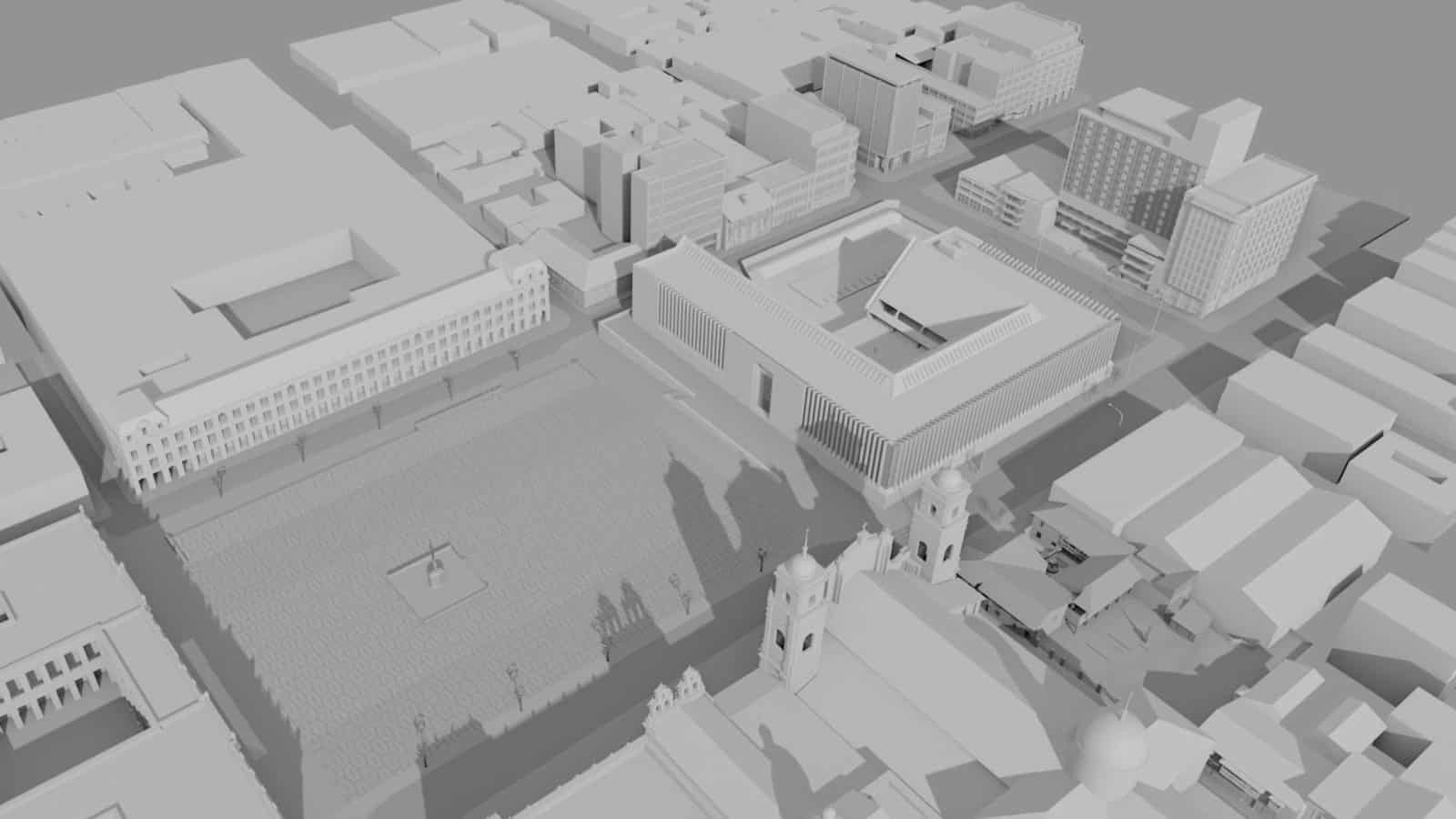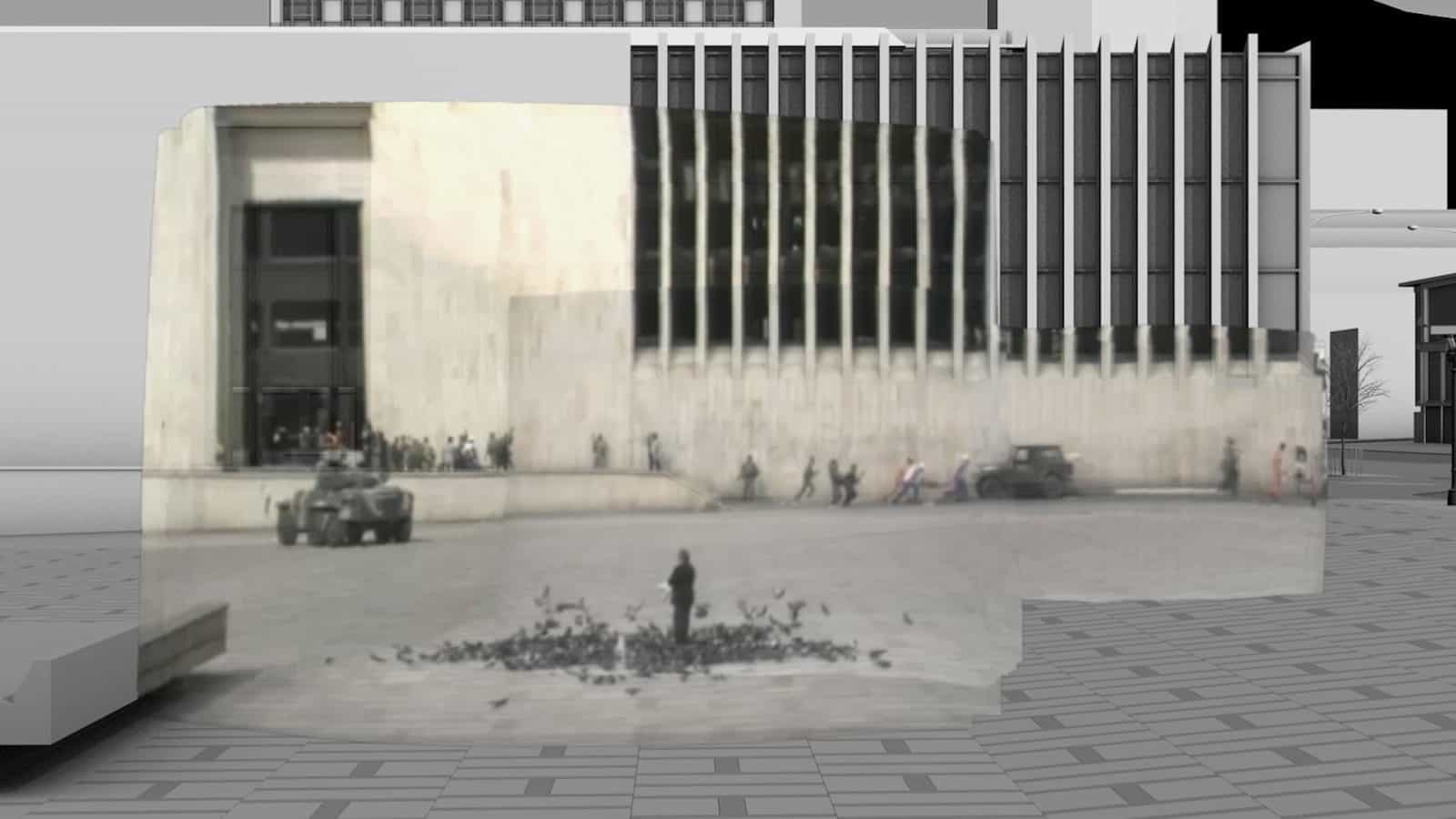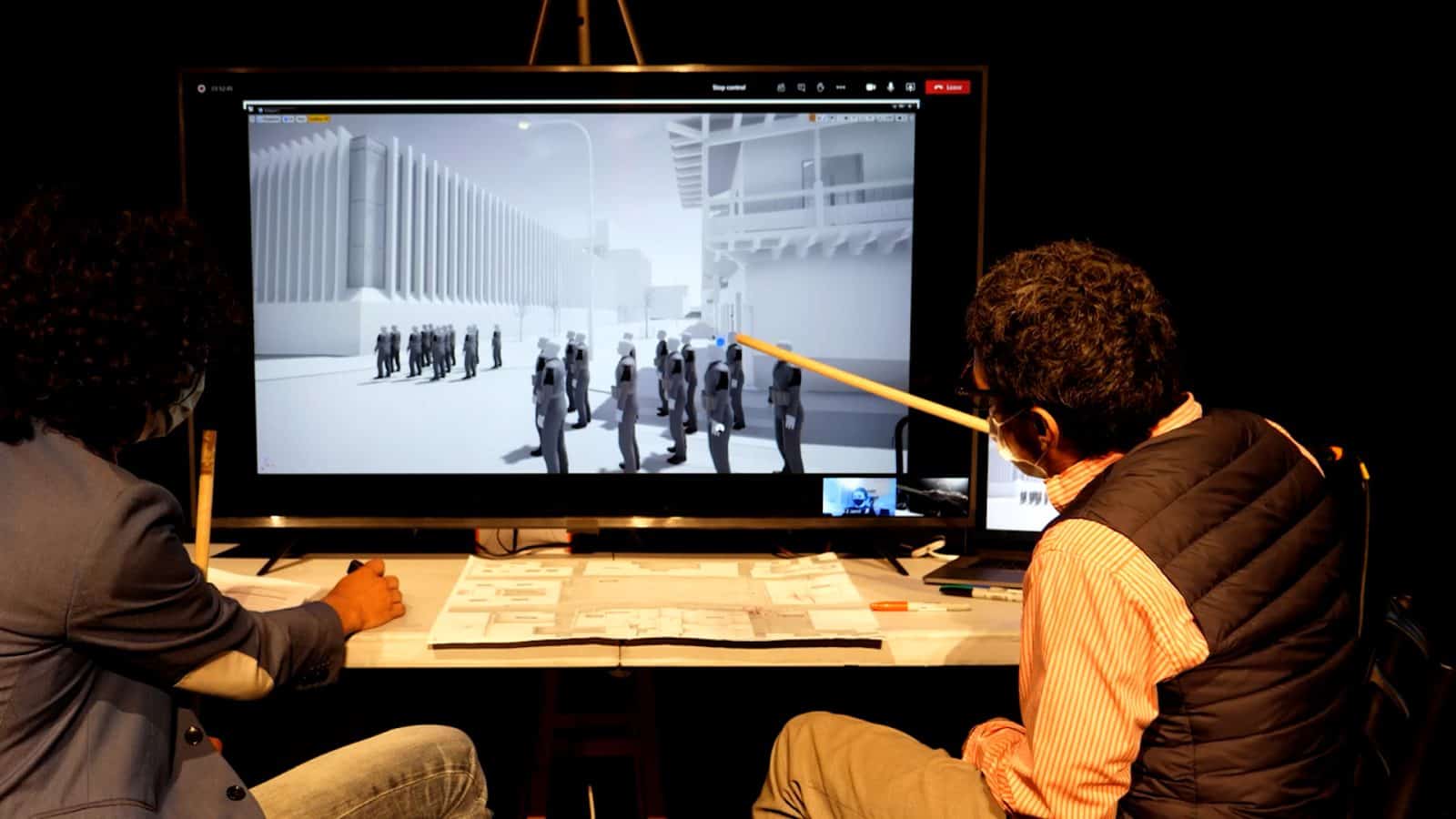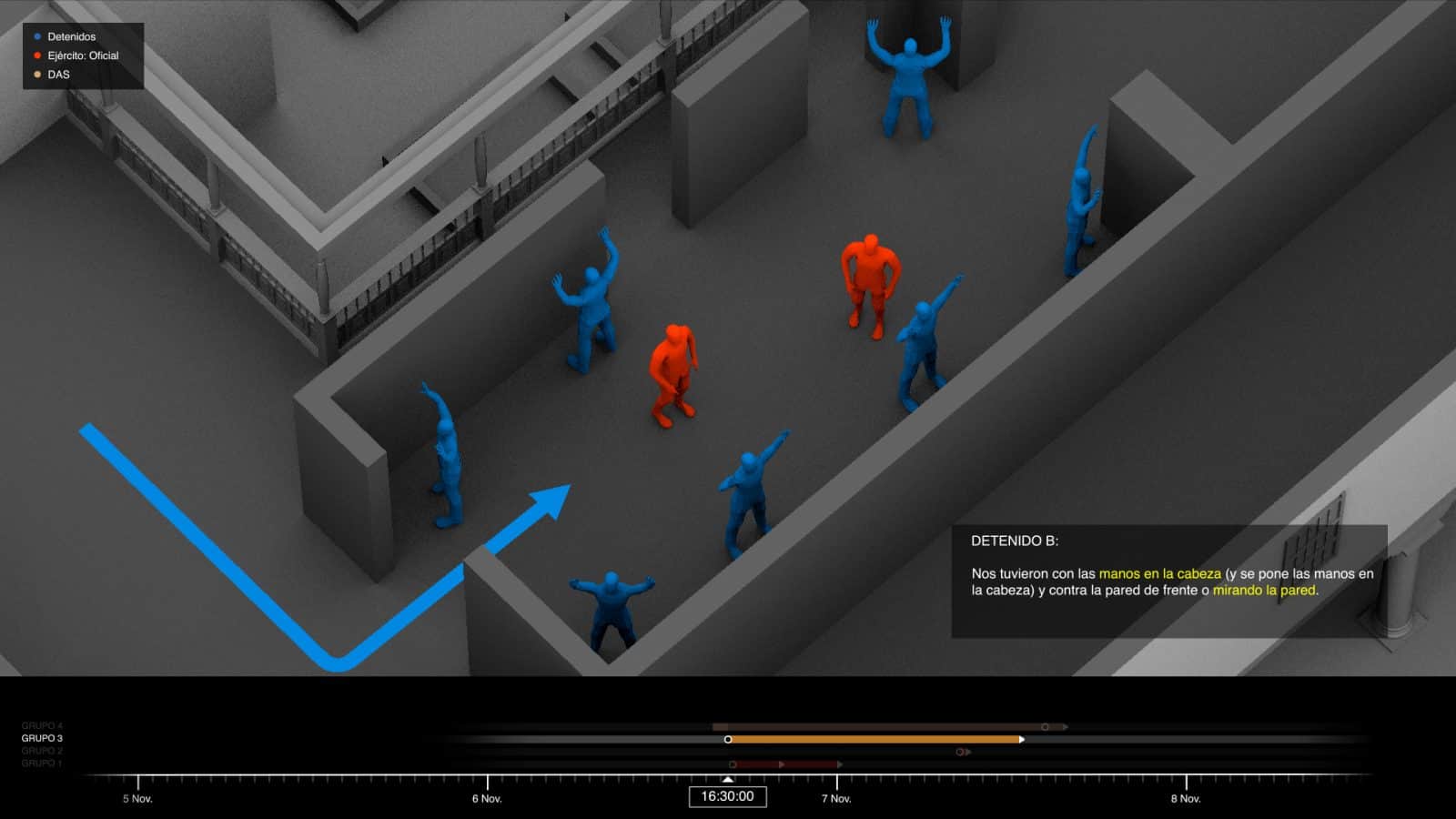Commissioned By
- The Commission for the Clarification of Truth, Coexistence and Non-Repetition of Colombia
Additional Funding
- Open Society Foundations (OSF)
- United Nations Development Programme (UNDP)
Collaborators
- Colectivo de Abogados José Alvear Restrepo
- Dh Colombia
- Programar Televisión S.A.
- Fundación Patrimonio Fílmico Colombiano
Methodologies
Forums
On 6 November 1985, a guerrilla group known as M19 stormed the Palace of Justice in Bogotá, taking state officials and members of the Colombian Supreme Court hostage. Security forces initiated a counter-siege that lasted two days, leaving over a hundred dead and large parts of the building burned.
Instead of focusing on what happened inside the Palace between the guerrillas and the military, a new visual investigation by FA and the Truth Commission examines the logistics of the military in their counterinsurgency operation and what happened to certain individuals once they left the building.

The joint research shows how cafeteria workers, students, visitors, guerrillas, and judges were classified as ‘special’ or ‘suspects’, detained, taken to different military facilities across the city, tortured, executed and in some cases, forcibly disappeared by the Colombian armed forces.

The investigation challenges claims by the Colombian military that people who disappeared after the siege were killed in firefights during the security forces’ assault on the building. It builds on and supports the work of relatives, victims’ organisations, human rights groups, and lawyers to show how what was posited as a chaotic hostage rescue by the military forces was in fact a coordinated act of state repression. This supposed chaos served as the state’s cover story for decades, masking the responsibilities of the military for the disappearances.
FA analysed fifty hours of press footage of the event—including some never seen before—and hundreds of testimonies, some of which we collected ourselves. Other sources include the archives of the Colombian Attorney General and of the Inter-American Court of Human Rights. Testimonies, videos, and audio recordings came together in a digital reconstruction of three key sites where the crime of enforced disappearance unfolded: the Plaza de Bolivar, the Casa del Florero, and the Canton Norte. Our analysis of the footage of the siege reveals the logistics of the military operating as people exited the building. Our analysis also identifies possible undercover agents collaborating with the intelligence and security forces, as well as the use of ambulances and medics during the operation.

The investigation maps for the first time the interconnected use of military facilities across Bogotá and their role in the disappearances, making the logistics of enforced disappearance legible as we follow victims between multiple sites and military installations around Bogotá.
Using testimonies, we were able to show how the security forces turned a nearby colonial-era museum of the Casa del Florero into an interrogation centre. We then followed the paths of the detainees to the military base of the Cantón Norte, located in the north of Bogotá, where the counterinsurgency operation was headquartered. There, we identified where detainees were interrogated and tortured.

The crime of enforced disappearance involves both violence against people and the long-term suppression of the evidence that would establish what happened to them. Creating a detailed timeline of events following the siege, we show how different types of evidence—videographic, testimonial, documentary and medical—was suppressed for the last 36 years, demonstrating how the perpetrators concealed the crimes of enforced disappearance.
Team
Forensic Architecture Team
Comisión de la Verdad
Extended Team
- Álvaro Fredy Acevedo
- Ramón Jimeno
- Evaristo Canete
- Virginia Vargas
- Juan Francisco Lanao Anzola
- Francisco José Lanao Ayarza
- Clara Patricia Beltrán Fuentes
- Nidia Amanda Beltrán Fuentes
- Germán Beltrán Fuentes
- María Del Pilar Navarrete Urrea
- Stephanny Beltrán Navarrete
- Sandra Beltrán Hernández
- María Inés Castiblanco Torres
- Jessica Katherine Garzón Castiblanco
- Claudia Peña Castiblanco
- Laura Tatiana Ortegón
- Deborah Anaya Esguerra
- Martha Amparo Esguerra
- Ricardo Herran Melo
- Jorge Eliecer Franco Pineda
- María Del Socorro Franco Pineda
- Diana Soraya Ospina Lizarazo
- Julia Figueroa Lizarazo
- Maira Fernanda Andrade Ospina
- Marixa Casallas Lizarazo
- Damaris Oviedo Bonilla
- Armida Eufemia Oviedo Bonilla
- Gloria Ruth Oviedo Bonilla
- Rafael Augusto Oviedo Bonilla
- Aura Edy Oviedo Bonilla
- Jairo Arias Méndez
- Rosa Milena Cárdenas León
- Edinson Esteban Cárdenas León
- César Enrique Rodríguez Vera
- César Camilo Rodríguez Conto
- Cecilia Saturia Cabrera Guerra
- Alejandra Rodríguez Cabrera
- Myriam Suspes Celis
- Elizabeth López Suspes
- Luz Dary Samper Bedoya
- Ana María Bidegain De Urán
- Orlando Quijano